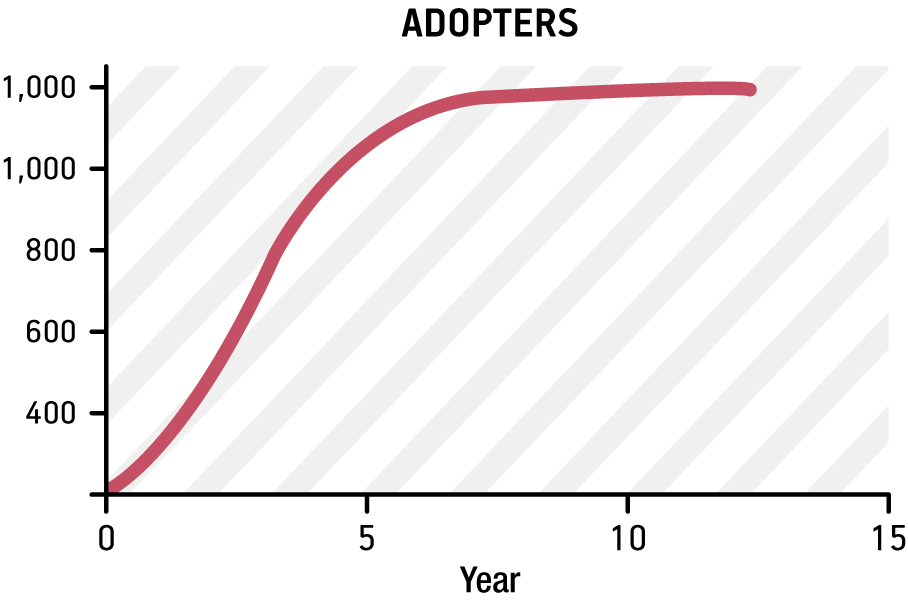Chapter 17. Stage Three: Virality
In 1997, venture capital firm Draper Fisher Jurvetson first used the term viral marketing to describe network-assisted word of mouth.[61] The firm had seen the power of virality firsthand with Hotmail, which included a vector for infection in every email—the now-famous link at the bottom of a message that invited recipients to get their own Hotmail account.
Decades earlier, Frank Bass, one of the founders of marketing science, described how messages propagated out in a marketplace.[62] His 1969 paper, “A New Product Growth Model for Consumer Durables,” explained how messages trickle out into a market through word of mouth. At first, the spread starts slowly, but as more and more people start talking about it, spread accelerates. However, as the market becomes saturated with people who’ve heard the message, spread slows down again. This model is represented by a characteristic S-shape known as the Bass diffusion curve, shown in Figure 17-1.

When researchers compared the spread of Hotmail to the predictions from Bass’s model, they found an almost perfect fit.
In the Virality stage, it’s time to focus on user acquisition and growth, but keep an eye on your stickiness too.
There’s a risk that you build virality and word of mouth at the expense of engagement. Perhaps you’re bringing in new ...
Get Lean Analytics now with the O’Reilly learning platform.
O’Reilly members experience books, live events, courses curated by job role, and more from O’Reilly and nearly 200 top publishers.

